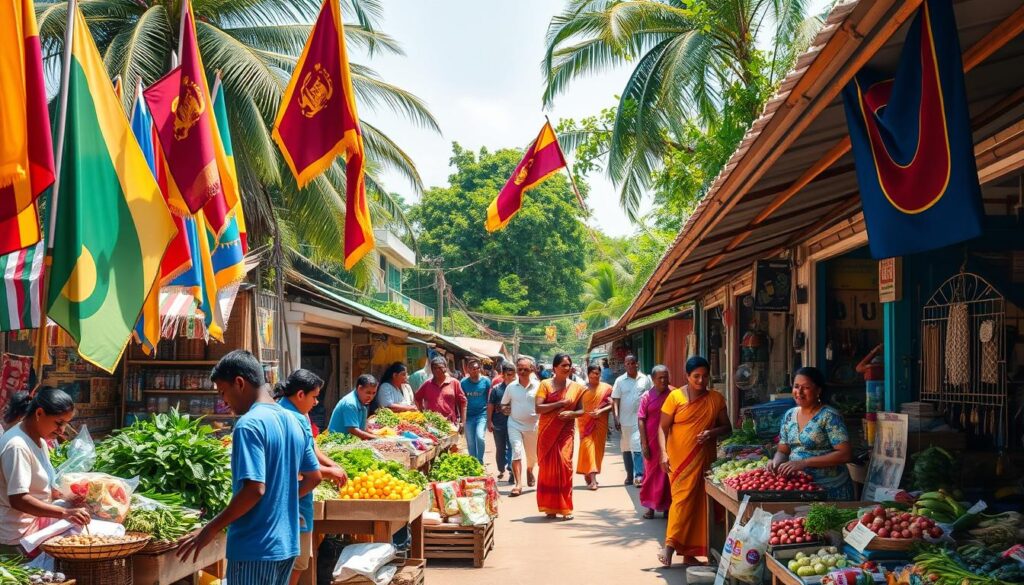Sri Lanka’s Stock Market Emerges as a Leading Performer
The Colombo Stock Exchange (CSE) has become a top-performing equity market in Asia. It showcases Sri Lanka’s economic strength and draws global investors. The CSE’s impressive returns and growth prospects make it a regional leader.

As of October 25, 2024, the CSE’s All Share Price Index (ASPI) showed a 29.65% return in USD terms. This performance ranked it second best in Asia, according to Bloomberg.com.
Sri Lanka’s capital market is attracting both local and international investors. The country’s economy shows resilience and potential for growth through regional integration.
Colombo Stock Exchange Ranks Second Best in Asia
The Colombo Stock Exchange (CSE) has secured the second-best performing equity index in Asia. This achievement, as of October 25, 2024, showcases Sri Lanka’s thriving capital market. Both local and international investors find the CSE increasingly appealing.
Impressive Year-to-Date Return of 29.65% in USD
The CSE’s All Share Price Index (ASPI) boasts a 29.65% year-to-date return in USD. Bloomberg.com data reveals this exceptional performance. This success highlights the strength and potential of Sri Lanka’s stock market.
Resilience and Growing Appeal to Local and International Investors
The CSE has shown remarkable resilience despite global economic challenges. Its strong performance reflects investor confidence in the Sri Lankan market. The country’s stable economic growth averages 4.6% annually over the past decade.
Sri Lanka’s progress in achieving UN Millennium Development Goals has boosted investor interest. The CSE attracts foreign investment due to its diverse industries and robust financial sector. Strong corporate governance and transparency create an ideal environment for investors.
Strong Daily Average Turnover and Record-Breaking Performance
The Colombo Stock Exchange (CSE) is showing impressive daily turnover and performance. For the week ending October 25, 2024, daily average turnover hit Rs. 3.058 billion. This reflects strong market activity and investor trust.
The CSE saw two straight days with turnover over Rs. 4.7 billion. This happened on Thursday and Friday. It shows rising interest from local and global investors in Sri Lanka’s market.
ASPI Closes Near Year’s Record High
The All Share Price Index (ASPI) ended at 12,517.58 points. This was just one point shy of the year’s record high. It proves the market’s strength despite global economic issues.
The S&P SL20 index also gained, closing at 3,759.30 points. This index tracks the top 20 stocks on the CSE. Strong performance across indices shows the market’s overall health.
CSE’s record-breaking run highlights Sri Lanka’s appeal to investors. With high turnover days and ASPI near its peak, the market looks set for growth. This trend suggests stability and potential in the coming months.
Sri Lanka’s Stock Market Emerges as a Leading Performer in Asia with
Sri Lanka’s stock market shines as Asia’s top performer. The country’s strong economy and financial sector fuel this success. Smart economic policies have boosted regional growth and investment opportunities.
Resilient Economy and Robust Financial Sector
Sri Lanka’s economy drives its stock market’s success. The financial sector’s strength builds investor trust. The central bank’s smart policies and government reforms ensure economic stability.
Investor Confidence Boosted by Strong Corporate Governance
Sri Lanka’s commitment to good business practices attracts investors. Rules ensure companies are open and fair. This builds trust, leading to more stock market activity.
Diversified Industries Attract Foreign Investment Inflows
Sri Lanka’s varied economy draws foreign investors. Thriving sectors like tourism and IT catch global attention. The government’s friendly policies encourage more foreign investment.
This boosts the stock market’s energy. Investors see growth chances in many industries.




